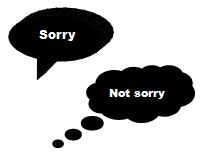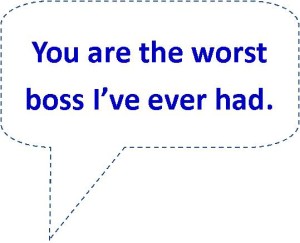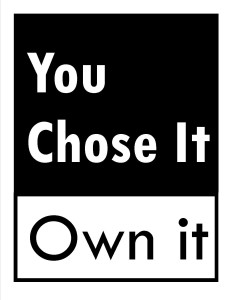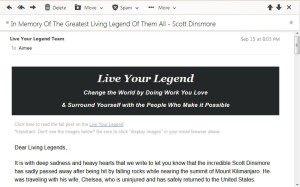Living Your Values
Biz Lessons from the Diner, Zola Twitter Style
OK listen up. Long story.
So I’ve been having these cravings for pork & pineapple. No idea. So today I walk by the local diner & see an ad for BBQ pork + pineapple omelets.
So I’m like damn, my craving! I lowkey sit at the counter cuz it’s busy. Coat’s not off & the busser puts coffee down–nice!
I ask, can I order and he’s like no the waiter has to do it and he points to a server who looks about 17 waiting on a booth behind me.
So I’m like ok, drink coffee a while & the server never comes! He’s walking between the counter & booths, doesn’t even look at me!
I think maybe he thinks I’m just drinking coffee so I lay the menu closed flat away from me. Cuz that’s the signal to order food now!
Nope. Then this baby server (NOT the same one) asks a guy a few seats on my left if he’s ready to order. I say to the couple on my right:
“AM I IN THEIR BLIND SPOT or what” & we’re laughing but I’m annoyed. The couple’s all casual, talking to me.
Now the busser refills my coffee and I ask can he get a waiter. He goes straight away & talks to them. So I’m like ok, they’re ready.
Nope. 17 goes past, no eye contact, asks people who sat after me for their order. I WAS DONE. I WAS HANGRY.
I get my things & say to the couple I can’t deal w/this today. Real quick the woman jumps up, says “No I’ll find someone, I know the owner.”
I just want to go but I was like yea ok & this normal age guy comes over all “I’m in another section but I can take your order.”
I’m like I just want the omelet special but nobody is looking at me except the busser. He goes I’m real sorry, you want hashbrowns.
Then the woman goes “Put it on my tab” and I say OMG you’re so nice thank you but I’m thinking damn my stupid craving.
Then the normal age waiter goes “No, it’s on the house I’m sorry you had to wait.” I was like OHHH, well thank you.” Awkward silence.
I get my food & 17 is by every 10 min, how is it, coffee? The couple’s talking w/me, glad you stayed & all. We’re saying he’s young, he…
Doesn’t know to watch the room. I feel stupid but the omelet is good, the pineapple’s on the top not inside, but it’s good.
The couple’s my new BFFs, we exchange #’s & they tell 17 they tipped him & the normal age waiter in their bill & say bye and leave.
I ask 17 “did you just not see me?” Cuz he didn’t apologize & for real I wanted to know what was what. He just says “I got double-seated.”
Then I’m done eating & he goes “my manager said it’s free.” SO I tip $10 & say thanks, know you’re busy. But I’m thinking you saw me…
But didn’t make eye contact & say “be right w/you” & why did he serve later people BEFORE me, TF?
I don’t care about getting comped or waiting, it was being flat out ignored like nobody was going to serve me ever. Awkward as hell.
I don’t want to go back there cuz I’m embarrassed. But there’s one good thing: made me think how to do better in any kind of biz.
Acknowledge customers because NOBODY LIKES TO BE IGNORED. Apologize for screw ups. Serious, don’t pretend you didn’t screw up.
And if you read this whole thing to get to the biz part at the end you’re hilarious!
This Twitter-style post was inspired by Zola’s brilliant Twitter storytelling, which was repackaged into Storify by Mike.
Writing About the Writing on Jezebel
 I’ve only recently discovered Jezebel and now have the pleasure and pain of reading old articles that I’m too late to comment on. It’s like reading about conversations on topics I care about that took place at the most amazing dinner party that I didn’t know I had been invited to.
I’ve only recently discovered Jezebel and now have the pleasure and pain of reading old articles that I’m too late to comment on. It’s like reading about conversations on topics I care about that took place at the most amazing dinner party that I didn’t know I had been invited to.
The articles are well-written and sometimes shine a light on under-represented groups and the dark sides of societal norms. These pieces are especially interesting to me because I’m trying to be aware of situations when my unconscious biases need to be checked.
Since I’m too late to be part of the discussion in the comments, writing about them is the next best thing.
My favorite post from the past is “A College Freshman Turned in My Blog Post as His Homework” by Dodai Stewart. Stewart was notified by a college professor that a “…white male student attempted to get by on the intellect of a brown woman…by stealing her work on appropriation.” Stewart describes the incident and aftermath, and ponders how to respond to the student’s apology.
The plagiarized work was from Stewart’s piece “On Miley Cyrus, Ratchet Culture and Accessorizing With Black People”.
There are 854 comments on the post and almost all of them are insightful, informative, hilarious, or a combination of all three. When I was done, I felt like I’d read a book that wove together bits of information on college writing skills, plagiarism, flimsy apologies, cultural appropriation, and humor.
I’ve given up reading comments on most sites because the hatred expressed makes me fearful and depressed for the state of humanity. But Jezebel comments…so little trolling and the snark is good-snark. It’s smart without the “smarter than thou” tone.
I’ve got Stewart’s piece bookmarked so when I’m miserable from political campaigns and social network posts that read like hate speeches, I can return to a beacon of hope in the dark world of the interwebs.
How To Tell If You Have A Cat And Other Business Problems
 I have a problem. I’ve been experiencing unusual symptoms and can’t tell if I have a cat or not.
I have a problem. I’ve been experiencing unusual symptoms and can’t tell if I have a cat or not.
You’re probably thinking “Seriously, how can you not know if you have a cat.” Let me remind you that a 47 year old woman recently gave birth one hour after realizing she was pregnant. Sometimes it’s hard to tell these things.
Today I met with a trusted advisor to see if she could help me determine if I have a cat or not. She had a series of questions about my symptoms:
Advisor: Is there is a cat in your house?
Me: Well, I can’t say for sure. I saw a cat on the stairs yesterday but haven’t seen one yet today. Sometimes they hide or sleep in weird places, so there might be a cat in the house. Or not.
Advisor: Are you feeding a cat?
Me: This seems black and white, but it isn’t that simple. I put out food and then when I check the dishes later, they are less full, but I haven’t actually witnessed a cat eating food. Maybe the food evaporates. Or a raccoon sneaks in and eats it. I saw the tail end of something that looked like a raccoon on my bed.
Advisor: Let’s backup. When did you first notice that you might have a cat?
Me: OK, I can answer this one. My neighbor was going out of town and asked if I’d like to watch her cat at my house. One of her other two cats picks on this one. So she brought the cat over with some food and litter and when she let her out of the carrier, she promptly ran and hid under a chair (the cat, not my neighbor). This was about two weeks ago.
Advisor: Great. So we know there has been a cat at your house recently. Now we just have to determine if you have a cat. Cat owners name their cats. What is her name?
Me: <sigh> This is another question that is tough to answer. My neighbor told me that the cat’s name was Stripes when she adopted it from another family. I have a hard time pronouncing that word…it gets tangled up in my mouth. She’s not really my cat, I think, so it doesn’t seem right to rename her. For now I’ve been referring to her as “She who shall not be named”. I did catch myself thinking of cat names, though.
Advisor: I see. Did your neighbor return home?
Me: I think so, but I haven’t actually seen her. I didn’t hear from her on the day that she was supposed to return, so I sent her an email and asked if she needed me to watch the cat for a while longer. She said that would be helpful.
Advisor: Hmm, that is vague. Let’s try a rapid-response technique. Just say the first answer that comes to mind. Ready? Cat hair!
Me: Everywhere!
Advisor: Vomit!
Me: None, thank God!
Advisor: Litterbox!
Me: Yes!
Advisor: Meow!
Me: Meow!
Advisor: Did you really just meow back at me?
Me: <defensively> You said to say the first thing that came to mind!
Advisor: I think you should give it more time to see if it clears up on its own.
And that is how we ended the conversation.
I still don’t know if I have a cat. But I know I love metaphors, so here’s one: Sometimes at work something is obvious to a few people and the rest just don’t get it.
For example, rumors of pending layoffs are percolating and several people ramp up their networking while the rest are shocked and unprepared when they are let go. Or a new vice president takes over a division and some people pay extra attention to the direction the wind is blowing. The others are surprised and dismayed when groups are reorganized, budgets are reallocated and projects are reprioritized.
It’s almost as if a few people have their eyes open and the rest are wearing dark glasses. I recommend keeping your eyes open. You’ll be better prepared for change and have an advantage over your coworkers who aren’t paying attention.
Some people naturally absorb many details around them and don’t get bogged down by what is right in front of them. If that is part of your personality already then take advantage of it! Practice putting it to use by listening to hallway conversations instead of tuning them out. When senior leaders are talking, don’t take their words at face value. How are they delivering their messages – vaguely, talking around issues, or over-emphasizing that people should “stay focused on their work”?
If observing everything is not natural to you but you want to be highly regarded and get promoted, then you can approach this by being politically savvy. Don’t worry about paying attention to everything. Instead, pay a lot of attention to what senior management is doing.
Who are they meeting with and how frequently? What projects are they most interested in? Is there a change in their usual routines? Make sure you greet them and ask what they’re focused on these days, and if there’s anything you can do to help. You can piece together a lot of information with these tactics.
Don’t be a weirdo hanger-on or an over-eager, desperate wannabe. We know those people and despise them, right?
Be natural and nonchalant while you are being curious and observant. Then maybe you’ll be quick to realize when the business is shifting and be able to make your choices proactively.
As for me, I’m going to buy some kitty litter. I want to be prepared in case I have a cat.
Damage Control at Work
 Some of my worst moments at work were when I pissed somebody off. Fortunately, I can only remember a handful of times when someone was really angry with me. And even more fortunately, I learned early on in my career how to do damage control.
Some of my worst moments at work were when I pissed somebody off. Fortunately, I can only remember a handful of times when someone was really angry with me. And even more fortunately, I learned early on in my career how to do damage control.
I took a 12 week Dale Carnegie course that changed my life for the better in many ways, and learning to recover when someone became angry with me at work is one of them. I recommend the course to anyone who wants to improve at public speaking, human relations and leadership. But if you just want me to get to the point about damage control, here it is:
Say that you were wrong.
Or the way Dale Carnegie states it in his Principles from How to Win Friends and Influence People: “If you are wrong, admit it quickly and emphatically.”
I had just learned about this principle when I managed to piss off an entire team of people that I was working with at the time. Upper management had decided that I would take over a program that they had been responsible for and I jumped in without discussing the change with them.
When the situation blew up, I felt terrible. I should have scheduled a meeting with them and positioned the change as a way to alleviate some of their  workload. Instead, it came across as if I was stealing their project without considering what they wanted.
workload. Instead, it came across as if I was stealing their project without considering what they wanted.
I immediately went to each person and apologized, said that I was wrong, and asked if we could have a meeting to make a group decision about how to manage the program in the future.
I remember those conversations very clearly. They all responded to me graciously and thanked me for approaching them. Sincerely acknowledging that I was wrong made me vulnerable and was disarming. I didn’t bring defensiveness or justifications to the conversations so there were no battles.
The nervousness that I felt when I knocked on their office doors was much less painful than the remorse and anxiety of upsetting them and making a mistake that could have damaged my career. By doing immediate damage control, my career wasn’t damaged at all. In fact, those team members had more respect for me than they did before; our working relationships improved.
That experience made a deep impression on me. I’ve only made a few fury-inducing work mistakes since then and am grateful I that I know how to manage them.
How to Avoid Losing Your Shit at Work
 Have you ever lost your temper at work and could not rein it in? You know, the kind resulting in a red-faced tantrum, a shout-down, or a crazed look in your eyes that made it seem like you might actually throw things?
Have you ever lost your temper at work and could not rein it in? You know, the kind resulting in a red-faced tantrum, a shout-down, or a crazed look in your eyes that made it seem like you might actually throw things?
If not, we probably haven’t met. And you make me nervous. You either have supremely fine-tuned skills in finding healthy ways to vent your anger or you have an internal build-up of rage that will shatter windows if it ever explodes.
Losing your cool at work sounds bad, but there are so many provocations that it is normal to feel that way sometimes. Provocations like jerky managers, coworkers, staff or customers. Or equipment that breaks when you really need to use it, or having to deal with the technology support department. Some companies call the IT support function the “help desk”. Employees often call it the “unhelpful desk”.
The last time I unleashed on someone at work, that someone was the third person I’d spoken with about a common computer issue – I needed my password reset. I had been off and on the phone for two hours trying to get this resolved. I got more and more upset as the last support person I spoke with gave me incorrect information, asked questions I’d already answered for him, and sounded like he was enjoying my frustration. I finally asked for the hours and locations where I could get help in-person. He said he didn’t know. And then asked if he could close the support ticket.
I don’t remember exactly what I said, but I do remember holding my phone in front of me as I yelled into it.
Stories of people losing their tempers tend to stick around and become humorous because we relate to them. My family has one that goes back to the days when my mom had a Baskin Robbins store. One day a young man came in asking for a sample of an ice cream flavor. As she handed him the little spoon, he tried to give it back and said “It’s not big enough.” If you’ve ever worked long food service shifts for years on end, you’ll understand that her reaction was: “Get out. Get OUT. GET OUT!”
I try to treat people with respect even when I’m flustered or when they are behaving poorly because that is part of my values. However, I’m flawed and sometimes exceed my capacity for containing my feelings. Fortunately I’ve learned from others and from my own mistakes and now have a set of tactics in place to deal with potential blow-ups before they happen.
The first and best action to take when you feel like you’re about to explode is to leave. As in, leave the workplace until you’ve calmed down or just go home for the rest of the day.
This didn’t occur to me as option until a time when I was debriefing with my then-manager after a horrible meeting. It was a stressful place to work on a good day and after this particular meeting I was very upset. My manager said if I couldn’t clear my head enough to get through the day without the risk of snapping at someone in our department, then I should go home. He wasn’t annoyed – he was as miserable as I was but was better at hiding it.
I was stunned. I had never left work unless I was sick or had an appointment. It took a while for the logic to sink in. And once it did, I got my things and left and no one else noticed or cared. I was back the next morning with a refreshed perspective and ability to cope.
If you are in a less flexible environment where you need permission from managers to leave, take some time to get composed before you speak with them. Take deep breaths, splash water on your face, walk around a bit…then tell them you don’t feel well and need to leave.
Important: saying “I don’t feel well” is not a lie. If you are frustrated to the point where you might scream at the next person that takes too long getting coffee in the kitchen, then clearly you don’t feel well. It is in everyone’s best interest for you to recognize that and remove yourself from the potential triggers.
If leaving the workplace is out of the question, then get to the most private place you can, as soon as you can and for as long as you can. For most people this is the restroom. Even the most uptight workplaces have to let their employees go to the bathroom once in a while.
Lock yourself in a stall. This time you might not want to take deep breaths (!) but there are other ways to calm down enough to return to work.
Getting upset creates tunnel vision.
Gaining clarity about what is happening to us can broaden our perspectives, and in turn, give us more capacity to make choices about our actions. One technique I practiced in Seattle University’s Emotional Intelligence class is to name the feeling. To keep it simple, we learned to make a fist and label each knuckle as one of four feelings: mad, glad, sad or afraid (pronounce it “afrahd” because rhyming makes it easy to remember and also it is more fun to say that way).
For example, you might think, “I am mad because Janet cancelled my trip to the conference. I am sad because I think Janet didn’t understand why the conference is important to me and my project. I am afraid my coworkers will think I’m less important because I’m the only person on the team who won’t be at the conference.”
While you are thinking each statement, tap the knuckle that corresponds to the feeling you’re describing. I don’t pretend to know the physiological reason for it, but adding the physical action while you are thinking about your emotions helps to focus your attention and let your words sink in. If you can fully BE with the thought and feeling of “I am afraid my coworkers will think I’m less important”, you acknowledge, validate and process what you are experiencing.
You will probably feel vulnerable – but only to yourself in the moment, and once you acknowledge how you honestly feel, the emotions will move through you more quickly. You are turning your attention away from thoughts that keep you in a mental tailspin, like “Janet is wrong, she’s a jerk, this job is stupid and nobody stands up for me” and are putting your focus on taking care of yourself.
If you stay with this technique until you’re grounded again – or at least until you have to leave the restroom – you will be much more capable of getting through the rest of the workday without losing your shit.
Cuz you left your shit in the bathroom.
Sorry! Couldn’t resist that one.
Remember, reaching the limits of containing anger and frustration at work is normal. Recognizing it and taking actions to protect your reputation and avoid lashing out is professional and mature.
And hey! Wash your hands.
How to Survive a Horrible Boss
 Unfortunately, most of us will report to a boss that we hate at least once in our working lives. If it is just once, consider yourself lucky. I have a friend who has reported to five complete jerks and only two normal people in 15 years. It has been so tough on her that whenever she leaves one jerk behind to take a new role, I’m scared that the new boss will turn out to be just as jerky as the last.
Unfortunately, most of us will report to a boss that we hate at least once in our working lives. If it is just once, consider yourself lucky. I have a friend who has reported to five complete jerks and only two normal people in 15 years. It has been so tough on her that whenever she leaves one jerk behind to take a new role, I’m scared that the new boss will turn out to be just as jerky as the last.
A horrible boss can take many forms. She might yell at you or humiliate you. He might take credit for your work and blame you for his mistakes. She could try to sabotage your career out of spite. He could constantly change the direction of your projects, favor your teammates while disparaging you to others, threaten to fire you, or otherwise bully or harass you. Do any of these characteristics remind you of someone you’ve reported to?
The good news is that if you are stuck with a lousy manager, there are coping mechanisms that you can use until you or the creep move on.
One: Make friends with your boss’s peers. This is a strategic maneuver. If your boss’s peer group respects and likes you, then your boss has more to lose by treating you poorly. For example, if you provide information, resources, or anything else of value to another team within your department and you do it well, that team will not want you to get fired or quit in frustration. Get to know the managers of these groups. Show interest in them. Ask how you can provide additional value.
If the people in these teams don’t provide positive feedback to your manager on their own and you have an ally you can trust, ask that person to send an email touting your contribution. If you are visible in the department as someone whom other teams respect and depend on, your manager may grudgingly treat you better.
Two: Make friends with your boss’s boss. As with your boss’s peer group, being visible to your boss’s boss is essential. This person must know your name and recognize you when he or she sees you. If your work culture supports “skip-level” meetings, take advantage of it. Find out what this person cares about, worries about and what the goals are for his or her area of responsibility. Then think of smart questions to ask that will be easy for that person to answer. Ask about factors that contributed to recent successes. Treat the person like a respected mentor – say that you want to excel in your role and ask how he or she achieved career growth.
When you pass your boss’s boss in the halls, say hello and add any personal comment that is appropriate. If he or she has only recently met you, start off with, “Hi Cheryl, it was great to meet you the other day. I’m Joe Smith on Roger’s team. Thanks for the advice on the XYZ.”
Be natural and genuine, not smarmy!
Then when it is time for your boss to get approval for who to gives promotions or bonuses to, or how individuals are rated in performance reviews, your odds of having a favorable outcome are significantly increased than if you are completely unknown.
Three: Document your work and email it to your boss. Figure out a schedule that is not obnoxiously often and not so far apart that it is forgettable. Maybe every Friday, or once every two weeks. Keep it short so you don’t waste time and so that it has a better chance of being read. Even if it isn’t read, it is a record of your performance that you can bring up in meetings with your manager. This exercise is to cover your ass, so make sure your boss can’t use the excuse that your emails got lost in her inbox.
A good format is to make the subject line “Joe Smith’s Project Update, October 2, 2015″, then make a bullet list of three to six in-progress or completed projects. Use as much hard data as you can to support results. Examples:
- Closed $128K in hardware sales last week, and am at 102% of my quarterly quota.
- Delivered the Safety Training to 56 client teams year-to-date. The pass-rate is 92% vs. the goal of 90%, and satisfaction survey results are 95% vs. the goal of 90%. Satisfaction is currently 10% higher than last year.
- Delivered the ABC parts to XYZ customer on October 1, 2015, four days ahead of the due date. Received a thank you email from XYZ’s purchasing manager, Jane Smith.
Four: Document your boss’s poor behavior towards you. In any crappy work situation, documentation is critical. Many public and private sector organizations require managers or the Human Resources department to create a paper trail of documentation before they fire an employee to cover their tracks in case of a complaint or lawsuit.
Turn the tables and create your own documentation about how your manager treats you. Think of it as insurance in case you need to use it to protect your reputation. Document dates, verbatim quotes, witnesses and how the action violated the employee handbook (if applicable).
Your record of events may protect you if the situation gets worse. If your boss violates company policy towards you, maybe she has done the same to other people. Someone may have raised complaints in the past. If you decide to speak up or find yourself defending your integrity, your notes are likely to impact the outcome.
If you are fired, you might be able to use the documentation to get unemployment benefits. I know people in multiple states who have done this!
Or, you might choose to never disclose your notes. If so, it wasn’t a wasted effort. The act of documenting your reality is cathartic and can prevent you from feeling like you are the crazy one. Bad managers often specialize in lowering employees’ self-esteem and making them feel like failures. Don’t let them have that power over you.
Five: Remember that your manager doesn’t own you. I deliberately avoided using the terminology for a manager as someone “you work for.” You actually work for the organization – your manager is just the person you report to. I don’t even like the word “boss”…because you are the boss of your life and that person is only charged with the responsibility to manage you as an employee.
Your work is one part of your life, not your whole life. Don’t let your manager “follow you home” and ruin your weekends. Make that person as insignificant in your life as possible by focusing on what you do have influence over (see numbers 1 – 4!).
If you are currently dealing with a horrible manager, I hope you will have a new manager soon! Refresh your resume and LinkedIn profile. Get testimonials about your performance if possible (see numbers 1 and 2!). Save copies of your achievements and kudo’s from coworkers or customers (see number 3!). Brush up on any important skills and stay on top of current trends and technologies in your field.
And until then, I hope these tactics help you survive.
A Tribute to Live Your Legend’s Scott Dinsmore
 When I received an email from a friend letting me know that Scott Dinsmore died in a climbing accident, I was in disbelief. I receive his Live Your Legend email newsletters and had been tracking his yearlong journey around the world. He and his wife had been meeting with local Live Your Legend groups and were taking a break to climb Mt. Kilimanjaro. I had just read his newsletter describing his struggle to give himself permission to take a break from work to go on this climbing adventure.
When I received an email from a friend letting me know that Scott Dinsmore died in a climbing accident, I was in disbelief. I receive his Live Your Legend email newsletters and had been tracking his yearlong journey around the world. He and his wife had been meeting with local Live Your Legend groups and were taking a break to climb Mt. Kilimanjaro. I had just read his newsletter describing his struggle to give himself permission to take a break from work to go on this climbing adventure.
Scott was young and had accomplished more than most people will in their lifetimes. He gave a wildly successful TEDx talk and created courses and materials that reached people across the globe. It is sad to think of how much more he could have done to change people’s lives, and how much more he had to experience in his own.
What made the news difficult for me to believe was that Scott had a huge persona and had impacted so many people that he seemed immortal. I thought about his work and his passion and couldn’t imagine that he is no longer writing, creating and posting pictures of himself looking straight into the camera with a wide, genuine smile.
In the past few days I’ve been reading messages posted by his friends and followers on a Facebook page that was created to pay respects to him and his family. The messages were sincere and heartfelt. People who met him in person considered him a friend and those who knew him virtually also expressed personal feelings of warmth and gratitude for what they learned from him.
For me, Scott both inspired and in some small ways irritated me! He was relentless in his pursuit of living a meaningful life and I deeply admire that. He bravely quit a job that wasn’t aligned to his values to create a business that he enjoyed and benefited others’ lives. In my much smaller way, I strive to do the same.
Where we differed was that he seemed to have boundless energy for exploring, meeting and interacting with people, and he comfortably lived out of a backpack while soaking in the stimulation of new experiences. I just…don’t. While I enjoy people and adventures, I need a lot of alone time as a counter-balance. The thought of interacting face-to-face with as many people as Scott met with open arms and focused attention makes me feel frazzled. I’m a firm believer in resting and taking breaks when my body tells me I need it, and then push harder to achieve my goals when I’m restored. Feeling grounded and at peace with my life is more important to me than achieving traditional measures of success – like strong book sales when I’m finally published or growing my business rapidly.
I imagine if I had ever met Scott in person and described this, he would have listened to me with curiosity and said something like “You do you – it’s your legend to live!”
His TEDx video will live on YouTube for as long as any of those videos remain. His website and programs may continue in some form or not. It may not be immortality, but his impact on me and others will last a long time.
Scott, you lived with intention and showed us how it can be done. Thanks for the inspiration.
Macro vs. Micro
![]() A few months ago I was talking with someone about social issues in the United States. The conversation got intense. I was looking at the topic from the lens of a segment of the population that is frequently discriminated against. His perspective was that individuals should do their own thing, mind their own business, and not be offended by what other individuals do.
A few months ago I was talking with someone about social issues in the United States. The conversation got intense. I was looking at the topic from the lens of a segment of the population that is frequently discriminated against. His perspective was that individuals should do their own thing, mind their own business, and not be offended by what other individuals do.
As we calmed down and were respectfully ending the discussion, I said I was looking at it from a macro lens and he was looking at it from a micro lens. He responded, “there can be a lot of macro in the micro.”
I thought that was an interesting point, although probably not the way he intended it. On the one hand, if everybody stayed silent, there would be no movement to reform social injustices. On the other hand, sometimes the biggest problems are right in front of us and if we don’t take care of them we’re not doing the larger world any good anyway.
In a work context, it is easy to complain about what is wrong with large institutions like corporations and public sectors. Issues of inequality should be addressed, and I’ve been encouraged by seeing more and more people speak up in public forums like LinkedIn.
But what about the micro level? When a slur is spoken in our presence we can do the safe thing and mind our own business. Or we can speak up.
There can be a lot of macro in the micro.
Unconscious Bias in the Workplace
 I’ve been reading a lot about unconscious bias lately. It’s been fascinating to link from one article to the next, discovering research that provides a new lens to some of the work environments I learned about when conducting my own research of employees who quit their jobs. I heard plenty of stories from ex-employees who quit jobs where harassment, discrimination and violation of workplace policies were the norm instead of one-off incidents.
I’ve been reading a lot about unconscious bias lately. It’s been fascinating to link from one article to the next, discovering research that provides a new lens to some of the work environments I learned about when conducting my own research of employees who quit their jobs. I heard plenty of stories from ex-employees who quit jobs where harassment, discrimination and violation of workplace policies were the norm instead of one-off incidents.
Even when blatant acts of discrimination occur, if the people empowered to do anything about it (management) are unconsciously biased, they are likely to downplay the problems. “I have never seen anyone being discriminated against in our workplace.”
Of course you haven’t. If you’re not aware of a bias how could you see it?
Unconscious bias becomes a double whammy when it leads to bad behavior that is unchecked or worse, defended, because of the lack of insight. The effects can be seen in workplaces where raising a complaint can result in retribution, which is then also justified and disguised as performance problems. The victim is victimized twice. “You’re being too sensitive. You’re not a team player.”
Ugh.
What can you do when you see problematic behavior at work that others don’t? How do you eradicate a problem when people aren’t even aware that a problem exists?
You can speak up. I’m encouraged by the number of articles  and blog posts I’ve read on this topic. This LinkedIn post by Rachel Thomas was especially insightful, and it is where I learned about the Project Implicit site that I refer to below. You can ask your workplace to implement employee training, like Facebook and Microsoft recently did.
and blog posts I’ve read on this topic. This LinkedIn post by Rachel Thomas was especially insightful, and it is where I learned about the Project Implicit site that I refer to below. You can ask your workplace to implement employee training, like Facebook and Microsoft recently did.
You can also seek to uncover your own blind spots and then audit your behavior. Harvard hosts the Project Implicit site where individuals can test for hidden biases. I took multiple tests about gender, race and religion. Some of the test results disappointed me because they contradicted what I consciously tell myself about my beliefs. But that’s the point – to learn something I didn’t know about myself. Now I can monitor my thoughts and actions to reduce the potential that I will act on a negative bias without realizing it.
If you’re interested, the Project Implicit site describes their methodology and you can decided for yourself if you think your test results are valid.
Doing what you don’t want to do
 When it comes to doing something I don’t want to do, I make one of two choices:
When it comes to doing something I don’t want to do, I make one of two choices:
- I don’t do it
- I do it, and am clear about my reasons why
In career-land, this practice has been extremely useful. Anytime we work with other people there will be much that is out of our control. If we’re working for someone else’s business or entity, we don’t control the budget or policies. When we’re working with clients, we don’t control their business decisions. We don’t control the way other people act, either. There will be plenty of times when we are asked, told, or demanded to do things we don’t want to do.
At surface level, this is disempowering. However we almost always have choices. We can choose to go along to get along, negotiate, or say no and let the consequences be what they will be. Sometimes we make choices because we believe that the short-term discomfort is worth the long-term gains. Those gains might be money, career advancement or more opportunities later on. In any case, acknowledging to ourselves that we’re making a choice takes our power back.
I have a great non-work example. Last month I decided to do a showcase dance performance, something I’d been thinking of for the last three years. A non-competitive showcase is basically a dance recital for adults. In my case, I will be performing a Latin fusion routine with my dance instructor as the lead.
Partner dancing is one of my favorite hobbies. I’m most comfortable with country two step and other “bar dances” like the Cowboy Cha Cha, Schottische, and Horseshoe and have done them enough to have a great time without thinking much about the footwork. I also do ballroom dancing once in a while.
I will tell anyone that with all of these dances, I’m not a technical dancer. The moves are not executed perfectly and I’ll get off step once in a while. But I’ve danced enough to follow experienced leads and get back on count quickly, and I rely on styling and smiling for the rest. This has been just fine to have fun social dancing.
With this showcase, however, I’m learning a style of dance that is new to me and I want to be as technically accurate as possible from the beginning.
New style + new focus on technical precision = frustration2.
The Latin movement that I’m learning for the Rumba and Cha Cha is completely different from the type of dancing that I’m used to. I have to learn to move my feet, knees, hips and ribcage in a new way. It’s so unnatural to me that I feel like I’ve never danced before.
It reminds me of the last adult ballet class I took a few years ago, but it is even more painful. In ballet I can feel what the movement is intended to be even if I don’t perform the moves or sequences correctly. Latin motion is so new that I have no idea if I’m doing it right unless the instructor tells me.
To prepare for the showcase in two months, I’m taking three hours of lessons each week. It’s confusing, frustrating and embarrassing and I get so mad because each step is a struggle to execute correctly. I mostly hate it. And my attitude in class shows it, which isn’t fair to my instructor and only makes the lessons harder for me.
I could quit but I won’t. After years of relying on energy, expression and fancy moves instead of technical details, I am determined to learn how to perform the dances accurately. I’m choosing to take lessons that I dislike in order to dance well at the showcase and be a better social dancer afterwards.
In next week’s lessons I’m going to remind myself of the goal that I’m working towards. I’m also going to focus on being grateful for the opportunity and try to bring a lighter attitude to the studio.
To motivate myself, I watched the movie Dirty Dancing. If Baby could learn the Mambo in less than a week, I can learn Latin Rumba and Cha Cha in two months.
This experience is good practice for the work realm: remembering that I have a choice about doing things I dislike, including my attitude.
I still plan to have as many spins and dips in my routine as I can convince the choreographer to include, including something like the picture below.
 I have 63 days to work on this backbend. My hands and feet should be closer together with more arch in my spine and my leg pointed straight up in the air. The pretty sunset is like the flair that used to distract attention from my sloppy footwork. This time I want solid technique as my foundation and the fancy moves to be an enhancement.
I have 63 days to work on this backbend. My hands and feet should be closer together with more arch in my spine and my leg pointed straight up in the air. The pretty sunset is like the flair that used to distract attention from my sloppy footwork. This time I want solid technique as my foundation and the fancy moves to be an enhancement.
Will I do it? Yes I will. Nobody puts Baby in the corner.






Recent Comments